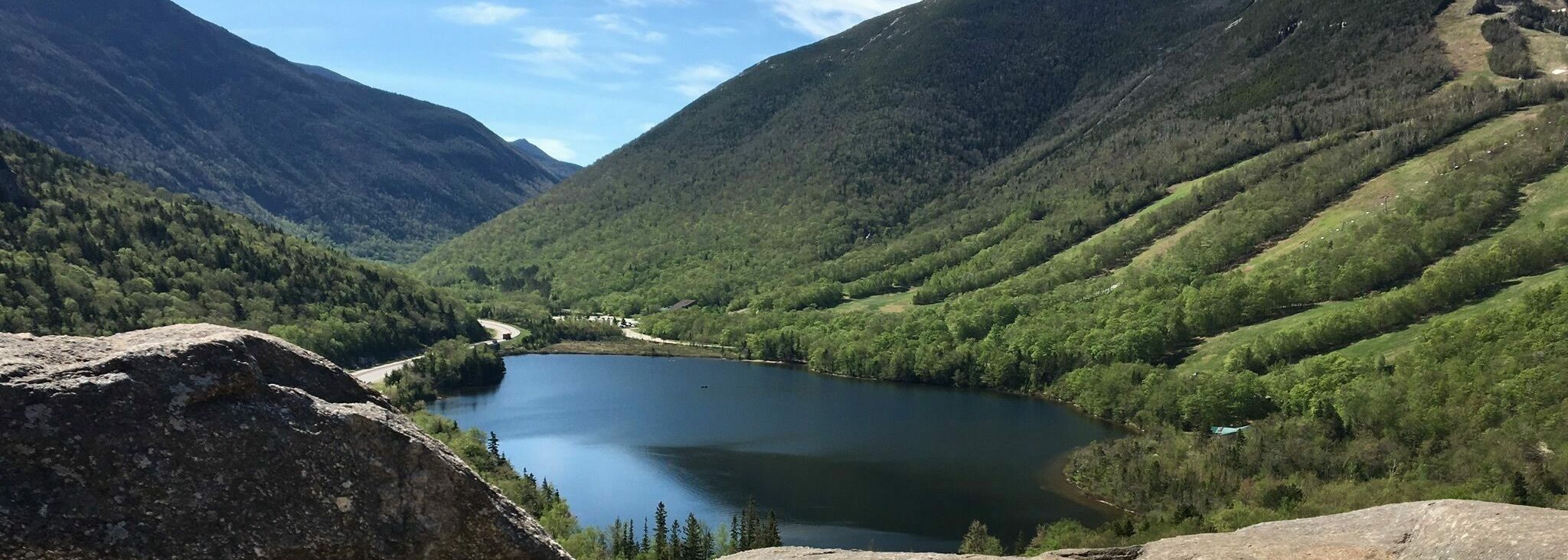What is Curly-Leaf Pondweed?
Curly-leaf pondweed is a perennial invasive aquatic plant. It is native to Europe and Asia and was accidentally introduced in the 1800s as an aquarium release. While it can grow in any waterbody in New Hampshire, it prefers colder, nutrient-rich water—like our spring runoff, snow melt, and cool temperatures of our lakes and ponds, making it one of the first plants to start growing in the spring.
Curly-leaf pondweed is identified by its lasagna noodle-like leaves with tiny serrations along their edges. At the end of its early growth period during the summer, it will produce a flowering stalk and cone-shaped buds of compressed leaves or turions. These turions can grow into mature plants in the cold water of fall or overwinter until next spring. Water carries turions and seeds throughout a lake or pond and between waterbodies.

Curly-leaf pondweed-a threat to our lakes!
Out-Competes Native Species of Space and Sunlight
- Curly-leaf pondweed can form dense mats. Dense mats restrict the water flow and oxygen exchange essential for lake health.
- Dense growth can also impact the native habitat of the lake, impacting the survival of fish and aquatic insects.
Reduces Oxygen
- Curly-leaf pondweed grows quickly early in the season. This leads to a significant die-off during midsummer, which causes large amounts of decaying plants. This decay releases phosphorus. Phosphorus feeds cyanobacteria and algae blooms. This further depletes oxygen once the algae dies.
- Not only are these mass plant deaths unappealing and unhealthy for our lakes, but can also cause fish kills. The die-off reduces oxygen needed for fish survival.
Impacts Recreation
- Curly-leaf pondweed can spoil your enjoyment of the lake! Its thick mats can make swimming unpleasant and unsafe.
- It can also tangle on boat propellers and requires time to clean off the plants, seeds, and turions from your trailer or equipment.
High Cost
- Invasive species like curly-leaf pondweed can deter tourism and affect local business success and property values. Homes by the water can be valued higher than others—but not when invasive species take over our lakes.
- It’s expensive and can take years to manage aquatic invasive species. Even with management, there is no promise of eradication.
It’s clear: we all need to take action and stop the threat of curly-leaf pondweed. To stop curly-leaf pondweed, we must stop the spread and fight ongoing infestations.
What can you do to stop the spread?
- CLEAN, DRAIN and DRY: We are responsible for keeping our boat, trailer, and other recreational gear clean of aquatic invasive species. One seed can start an infestation. Our public and private launches are at the greatest risk.
- Become a Lake Host: Volunteer or work at a public ramp near you to help educate boaters about the clean, drain, and dry methods and protect your lake from invasive species. Learn how you can get involved here.
- Spread the word: Talk to your family, friends, and neighbors around the lake about the threat the lakes you love are facing! Increasing public awareness about the dangers of invasive species is crucial for prevention. Early detection helps prompt management actions. Report invasive species and learn more about them with the NHDES.
- Be active in your community: Work with your local lake association, Conservation Commission, and town officials to implement regulations and guidelines to prevent the spread of invasive species. Need some help knowing how to get started?
Curly-leaf pondweed is a threat to New Hampshire’s lakes. Its rapid spread makes prevention and management even more important! By working together to raise awareness, we can stop the spread of curly-leaf pondweed. We can protect New Hampshire’s lakes for generations to come.


 by Martech Consulting
by Martech Consulting